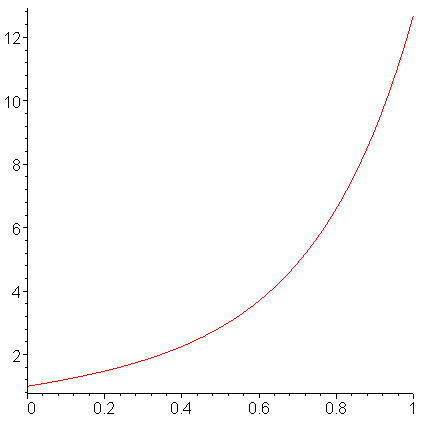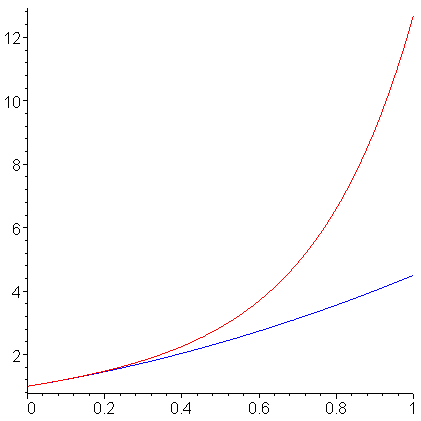Maple can solve some higher-order ODEs explicitly:
> dsolve( {
(D@@2)(y)(t) = 4 - sin(t) + y(t) - 2*D(y)(t),
y(0) = 1,
D(y)(0) = 2
} );

Here, the derivative of y(t) is represented by D(y)(t) and the second derivative by (D@@2)(y)(t) (applying the derivative twice).
The second example cannot be solved by Maple, as:
> dsolve( {
(D@@3)(y)(t) = y(t) - t*D(y)(t) + 4*(D@@2)(y)(t),
y(0) = 1,
D(y)(0) = 2,
(D@@2)(y)(0) = 3
} );
returns no solution. However, you can ask for a numeric answer:
> dsolve( {
(D@@3)(y)(t) = y(t) - t*D(y)(t) + 4*(D@@2)(y)(t),
y(0) = 1,
D(y)(0) = 2,
(D@@2)(y)(0) = 3
}, 'numeric' );
proc(x_rkf45) ... end proc
From the name of the variable, you should be able to guess which method is being used to find numeric solutions to the given ODE.
For interest, Figure 1 shows a plot of the solution to the second IVP.

Figure 1. The solution to the 3rd-order IVP.
If we look at the initial conditions, this suggests that:
- the value of the solution at 0 should be 1,
- the value of the derivative at 0 should be 2, and
- the concavity at 0 should be 3.
Consequently, the solution should look like the parabola with similar properties, namely
If we plot both the solution and the parabola, we see in Figure 2 that, at 0, there is a reasonable match.

Figure 2. The solution and a fitting parabola.
Copyright ©2005 by Douglas Wilhelm Harder. All rights reserved.


